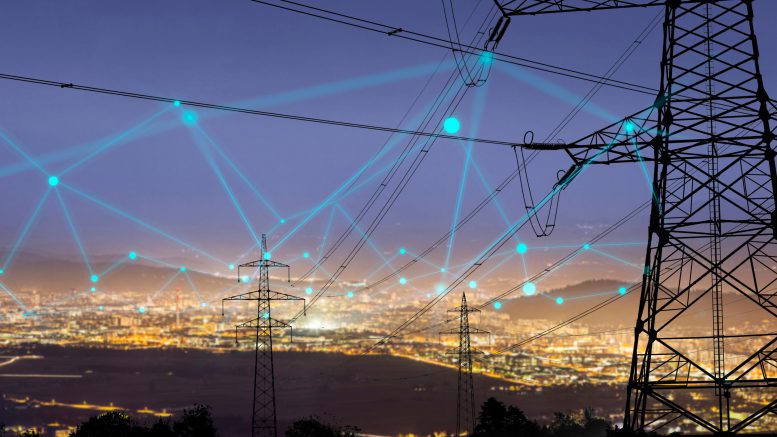Electric guzzling EV’s, trucks, trains and buses will soon move billions of people and cargo around this planet each day. So, what’s the best strategy to play this multi-decade investment theme?
Commodities tied to solar panels, wind turbines, or nuclear plants — does it really matter?
Whichever technology political leaders select, ending fossil fuel reliance means mass electrification. And the consequences of this are poorly understood.
You see, surging energy demand is already proving a major headache for the early adopters.
As a state, California leads the world in the global race toward carbon neutrality. According to the Los Angeles Times, ONE IN FOUR new cars sold in California are now EVs. That’s an all-time high.
But California’s role as an early mover is presenting problems: A missing link if you like.
You see, the state’s power grid is buckling under the strain from enormous electricity demand.
The Wall Street Journal recently reported the problem is so badelectric powered trucking fleets have been forced to recharge vehicles with diesel generators. Yet the state government remains resolute, it wants half of heavy duty trucks to be EV by 2035.
But what happens to aging power grids during extreme weather events?
In places like California, heat waves over the summer strain power networks as consumers dial up air-conditioning units to escape the heat. And when millions of cars, trucks and businesses are added into the mix? Well, as an early adopter, California offers a case study for others to watch.
According to a report from Politico, 10 days of triple-digit temperatures across the state last year brought its power grid to the brink. In fact, investigations found that regulators were preparing forced blackouts right across California as a last-ditch solution in managing the state’s frail energy grid.
A state home to the mega-rich, the world’s largest tech firms — symbol of wealth and prosperity — could barely keep the lights on!
Moreover, forced blackouts could have been deadly for the sick and elderly relying on cooling and home medical equipment such as dialysis machines. These are the potential consequences of a poorly planned energy transition.
California is a poster child for the green energy movement, yet its experience points to a rather major flaw in the world’s attempt to reach net zero.
Power networks built during the ‘age of oil’ are NOT designed for mass electrification.
Investor angle
According to Bloomberg NEF, nations will need to spend at least US$21.4 trillionto upgrade their existing grid networks.
Power grids might not have the same appeal like a sleek Tesla or fast action lithium stock. But the potential windfalls from this megatrend should excite investors.
You could invest in the grid rebuild through utility stocks and engineering contractors. But leveraging into the raw materials in this US$21 trillion megatrend could be the best bet.
Thanks to its supreme ability to conduct electricity and form minute strands of wire, copper remains the key metal in electrification.
Things look increasingly optimistic for this metal too. You see, 2023 has been a year of poor sentiment for the sector.
A slowdown in Chinese housing construction, persistently high inflation, concerns of global growth and looming recession in the west.
The tidal wave of bad news should be sending copper prices lower. Yet, the commodity is up more than 7% over the last 12 months.
It means the window could be closing on steeply discounted copper plays.
Copper should be high on your list as a major investment theme over the coming years.
In Australia, we have a rather small selection of copper opportunities. The country is responsible for just 4% of global production.
But across the other side of the world, another southern hemisphere nation could be primed to benefit from a global race to electrification.
Though recent concerns of nationalization and higher mining royalties have kept investors wary of Chile, now could be the time to revisit this.
The country is a land of the giants in terms of its copper deposits, supplying a mammoth 27% of global production. Enormous copper-gold porphyries dot the west coast of South America, however they’re especially concentrated in certain areas of the country’s Atacama desert.
However, there is a new copper frontier emerging in Chile. It’s a vastly underexplored area known as the Vicuña district, a region that straddles the Argentinian and Chilean borders.
NGEx Minerals (TSXV: NGEX) recently drilled a hole that returned 60 metres at more than 5% copper, plus 2 grams gold per tonne, and 44 grams silver. This was on the first hole of an untested area lying approximately 10 km from its existing flagship deposit.
The ground here is held by just three companies and Vicuña is rapidly proving that it could become a new global copper hub — an area hosting a ‘cluster’ of giant copper-gold porphyries. Despite recent discoveries, this remains a frontier location holding ripe discovery potential and could be a good choice for investors looking to allocate some risk capital to the copper megatrend that’s set to take place as the global economy moves to electrification.
James Cooper is a geologist and mining analyst based in Australia. You can follow him on Twitter (X) @JCooperGeo.





Be the first to comment on "The missing link toward net zero? The power grid"